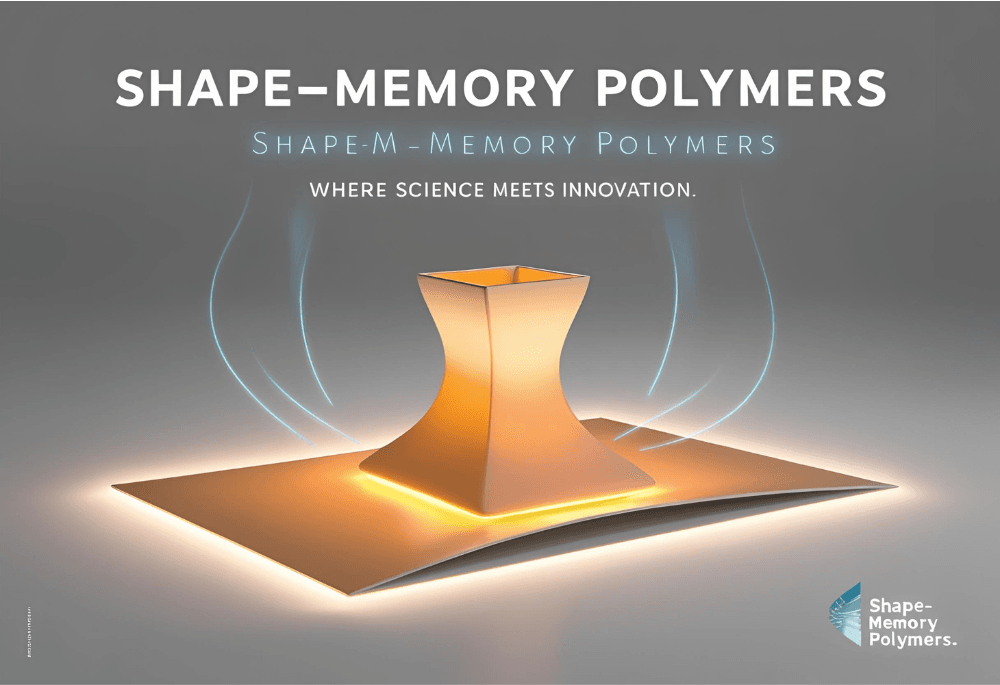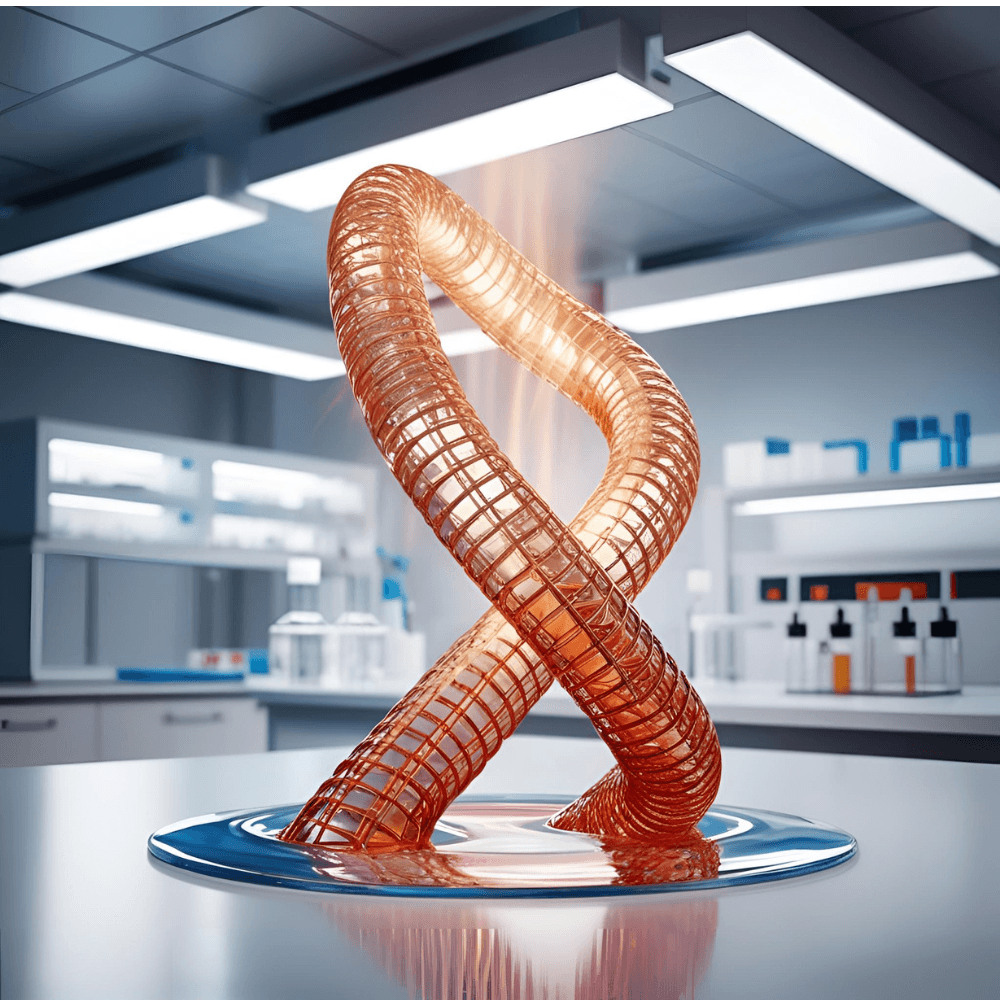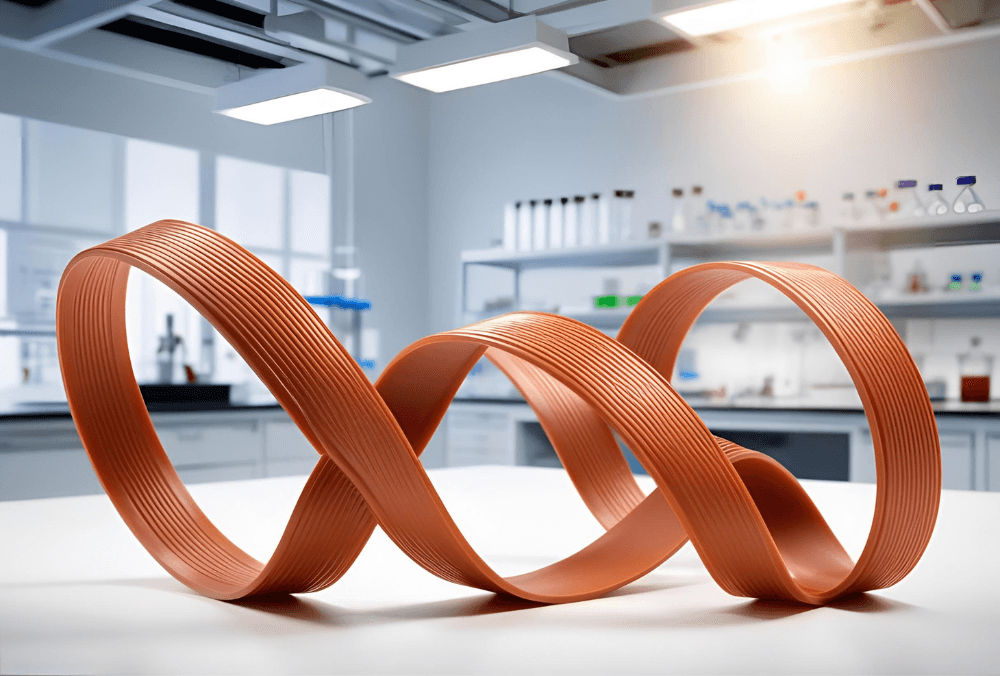Introduction: Shape-Memory Polymers
Imagine a plastic that can be bent, twisted, or stretched, yet, with the right trigger—heat, light, or electricity—it instantly snaps back to its original shape. This is the remarkable capability of shape-memory polymers (SMPs), a class of materials revolutionizing industries with their ability to “remember” and recover their shape.
In materials science, SMPs are gaining traction due to their ability to undergo controlled shape transformations. Unlike conventional plastics, these smart materials respond to external stimuli such as temperature, electricity, or even moisture. This unique property has paved the way for cutting-edge applications in medicine, aerospace, robotics, and consumer products.
From self-repairing car parts to biodegradable medical implants that adapt to the body, shape-memory polymers are unlocking new possibilities across industries. With continuous advancements in polymer chemistry and nanotechnology, the impact of these materials is only set to grow. Could SMPs be the key to the next wave of adaptive and self-healing materials? Let’s explore their potential in depth.

What Are Shape-Memory Polymers (SMPs)?
At their core, shape-memory polymers (SMPs) are a type of polymeric material capable of storing a deformed shape and returning to their original form when triggered by an external stimulus. They function much like a memory foam mattress, which compresses under pressure and regains its shape once the force is removed. However, unlike memory foam, which passively reshapes, SMPs require activation through external stimuli such as heat, electricity, or light.
How Do Shape-Memory Polymers Work?
The shape-memory effect in SMPs is primarily due to their dual-phase molecular structure:
- Permanent phase: Maintains the original shape and provides structural stability.
- Temporary phase: Holds the deformed shape until triggered to return to its original form.
When an external stimulus is applied (such as heat or light), the polymer chains in the temporary phase become mobile, allowing the material to return to its permanent shape. This phenomenon is governed by thermomechanical programming, where polymers are deformed at an elevated temperature and then cooled to lock the shape temporarily.
Key Properties That Enable Shape Change
- Thermal responsiveness: SMPs can be programmed at a specific transition temperature (Tg), beyond which they recover their original shape.
- Elasticity and flexibility: Unlike rigid materials, SMPs exhibit high elasticity, allowing them to undergo large deformations.
- Lightweight composition: Compared to traditional shape-memory alloys, SMPs offer superior weight reduction and cost-effectiveness.
- Multi-responsiveness: Advanced SMPs can respond to multiple triggers, such as moisture, pH levels, or electrical fields.
How Are SMPs Different from Traditional Polymers?
Unlike standard plastics, which permanently deform when subjected to stress, SMPs are engineered to retain a memory of their original form. While a regular plastic bottle warps under heat and remains distorted, an SMP can be programmed to revert to its initial shape under the right conditions. This makes them particularly useful in applications requiring reusability and adaptability.
Analogy: How SMPs Behave Like a Stretched Rubber Band
Think of an SMP as a rubber band that has been stretched and cooled to hold its elongated form. When you warm it up, it quickly returns to its relaxed state. This unique characteristic enables innovative applications in robotics, aerospace, and medical devices, where controlled shape recovery is essential.
By leveraging these smart materials, industries can develop self-healing, shape-adaptive, and reconfigurable products, offering a glimpse into the future of advanced manufacturing and engineering.
How Do Shape-Memory Polymers Work?
Step-by-Step Process of Shape Recovery
- Programming Stage: The polymer is heated above its transition temperature and deformed into a new shape.
- Cooling Phase: The polymer is cooled while maintaining the deformation, locking in the temporary shape.
- Trigger Activation: When exposed to an external stimulus (heat, light, or electricity), the polymer returns to its original form.
Trigger Mechanisms for SMPs
- Thermally Activated SMPs: Respond to temperature changes, widely used in medical implants and aerospace components.
- Light-Induced Shape-Memory Polymers: React to UV or visible light, ideal for micro-engineering and bioelectronics.
- Electric and Magnetic Field-Induced SMPs: Used in smart textiles and soft robotics, providing remote activation capabilities.
Comparison with Shape-Memory Alloys (SMAs)
Unlike shape-memory alloys (SMAs), SMPs offer greater flexibility, lower cost, and biocompatibility, making them a preferred choice in biomedical applications.
Types of Shape-Memory Polymers
Thermally Activated SMPs
- Used in biomedical implants, such as stents and sutures.
- Applied in aerospace for self-deploying structures.
Light-Induced SMPs
- Activated by UV/visible light, essential for microscale engineering.
- Used in wearable electronics and flexible circuits.

High-Strain Shape-Memory Polymers
- Can withstand extreme deformation.
- Common in soft robotics and deployable space structures.
Dual- and Multi-Responsive SMPs
- Respond to multiple stimuli (heat + light, electric + magnetic fields).
- Used for self-healing materials and adaptive clothing.
By integrating these advanced polymers into various industries, we pave the way for more versatile, self-repairing, and adaptive materials.
Applications of Shape-Memory Polymers
Medical Field
- Self-expanding stents: SMPs are used in cardiovascular medicine to create stents that expand once inside the artery, reducing the need for surgical intervention.
- Artificial muscles: SMPs can mimic muscle movement, leading to breakthroughs in prosthetics and robotics.
- Smart sutures: These specialized sutures tighten or dissolve in response to body temperature, making surgery more efficient and reducing complications.
- Drug delivery systems: SMPs are used in controlled-release drug carriers that respond to body heat or pH changes to release medication at optimal times.
Aerospace & Robotics
- Self-repairing spacecraft materials: SMPs enable the development of materials that autonomously seal microcracks, enhancing spacecraft longevity.
- Soft robotics with flexible actuators: SMPs are integrated into soft robots to create flexible, shape-shifting limbs, improving robotic dexterity and movement in confined spaces.
- Deployable space structures: SMP-based components allow satellites and antennas to unfold in space, reducing launch mass and improving efficiency.

Consumer Electronics
- Flexible displays: SMP-based screens can bend or fold without damage, paving the way for next-generation smartphones and wearable tech.
- Shape-changing wearables: SMPs allow fitness trackers and medical devices to adapt to body contours for improved comfort and functionality.
- Smartphone protection: Self-healing SMP coatings can repair minor scratches, extending device lifespan.
Construction & Engineering
- Self-healing concrete: SMPs incorporated into concrete mixtures can seal cracks autonomously, reducing maintenance costs and extending structure longevity.
- Earthquake-resistant structures: SMPs are used in seismic dampers and structural supports that absorb and redistribute energy during an earthquake.
Future Innovations
- Integration with AI and nanotechnology: SMPs combined with AI and nanomaterials could lead to intelligent self-repairing infrastructure, adaptive prosthetics, and advanced robotics.
Advantages and Challenges of Shape-Memory Polymers
Shape-memory polymers (SMPs) are a class of materials with the unique ability to return to a pre-programmed shape when exposed to an external stimulus such as heat, light, or electricity. This property has made them a promising solution in various industries, from aerospace and robotics to biomedical applications. However, like any technology, SMPs come with both advantages and challenges.
Advantages of Shape-Memory Polymers
- Lightweight and Highly Flexible
- SMPs are significantly lighter than metals and shape-memory alloys (SMAs), reducing the overall weight of components.
- Their flexibility allows them to be easily molded into complex shapes, making them ideal for aerospace, robotics, and soft electronics.
- Biocompatibility and Medical Applications
- Many SMPs are biocompatible, meaning they can be safely used inside the human body.
- They are widely used in stents, sutures, and implants, offering minimally invasive solutions in medical treatments.
- Programmability and Customization
- SMPs can be tailored to respond to specific triggers like heat, light, or electric fields.
- Engineers can fine-tune their shape-memory effect, stiffness, and transition temperatures to suit different applications.
- Self-Healing and Damage Recovery
- Some SMPs exhibit self-healing properties, allowing them to autonomously repair cracks or damage when triggered.
- This extends the lifespan of products and reduces maintenance costs in industries like construction, automotive, and aerospace.
- Cost-Effectiveness Compared to Shape-Memory Alloys
- Unlike SMAs (which often contain expensive metals like nickel-titanium), SMPs are polymer-based and generally cheaper to manufacture.
- This makes them a more cost-efficient alternative for large-scale production in various sectors.
Challenges of Shape-Memory Polymers
- Durability and Fatigue Issues
- Some SMPs degrade over time or lose their shape-memory properties after multiple activation cycles.
- This limits their reliability in applications requiring long-term performance.
- Slow Response Time
- Many SMPs take longer to respond to external triggers, especially when activated by heat.
- In applications requiring instantaneous shape recovery, such as robotics or emergency medical devices, this can be a drawback.
- Manufacturing Complexity and Costs
- While SMPs are generally more affordable than SMAs, advanced multi-responsive SMPs (triggered by multiple stimuli) remain costly to develop.
- Scaling up production while maintaining high-quality material performance remains a challenge.
- Limited Commercial Adoption
- Despite extensive research, SMPs are not yet widely used in mainstream industries due to regulatory hurdles and high development costs.
- Many industries are hesitant to switch to SMP-based materials without long-term studies on their reliability.
- Environmental and Sustainability Concerns
- While some SMPs are biodegradable, others contribute to plastic waste, raising concerns about their environmental impact.
- Researchers are exploring eco-friendly SMPs derived from renewable resources to address sustainability issues.
By addressing these challenges, scientists and engineers continue to refine SMP technology, bringing us closer to a future where materials can adapt, repair, and transform autonomously across multiple industries.
The Future of Shape-Memory Polymers
Shape-memory polymers (SMPs) are poised to revolutionize numerous industries, thanks to continuous advancements in material science and engineering. The future of SMPs is centered around multi-functionality, 3D printing innovations, AI-driven discoveries, and expanding market applications.
Multi-Functional SMPs
Researchers are developing SMPs that respond to multiple stimuli, such as heat, light, and moisture, simultaneously. These next-generation materials will enable adaptive structures for aerospace, soft robotics, and medical devices. For example, an artificial implant that reacts to both body temperature and moisture levels could provide more precise drug delivery or better adaptability to physiological changes.
3D Printing of SMPs
3D printing is transforming SMP fabrication by allowing for customizable, complex structures that were previously impossible to manufacture. Scientists are designing smart textiles , medical implants, and dynamic aerospace components using 3D-printed SMPs, enabling rapid prototyping and mass production with enhanced shape-memory properties.
AI-Driven Material Innovation
Artificial Intelligence (AI) is accelerating the discovery of new SMP formulations by predicting polymer behavior and optimizing material compositions. AI-driven simulations can identify the best polymer networks for various applications, cutting down research time and leading to more efficient, cost-effective smart materials.
Market Outlook
The global SMP market is expected to experience significant growth, driven by increasing demand in biomedical, aerospace, and consumer electronics sectors. Market analysts predict that SMP-integrated wearable devices, smart packaging, and self-repairing coatings will soon become mainstream. With ongoing research, shape-memory polymers are set to redefine the boundaries of material science in the coming years.
Conclusion
Shape-memory polymers represent a breakthrough in materials science, offering unique properties such as programmable shape recovery, self-healing capabilities, and lightweight flexibility. Their applications span multiple industries, from self-expanding medical implants to deployable aerospace structures and self-repairing consumer electronics.
As research progresses, multi-functional SMPs, AI-assisted material development, and 3D-printed SMPs are expected to drive innovation further. The demand for adaptive, self-healing, and sustainable materials will continue to push SMPs to the forefront of technological advancements.
As industries push for more advanced materials, shape-memory polymers will play a key role in the future of smart materials. Stay updated for the latest breakthroughs in self-healing, adaptive, and reconfigurable materials as we move towards a more sustainable and technologically advanced future!
For those interested in learning more about related advancements, consider exploring:






